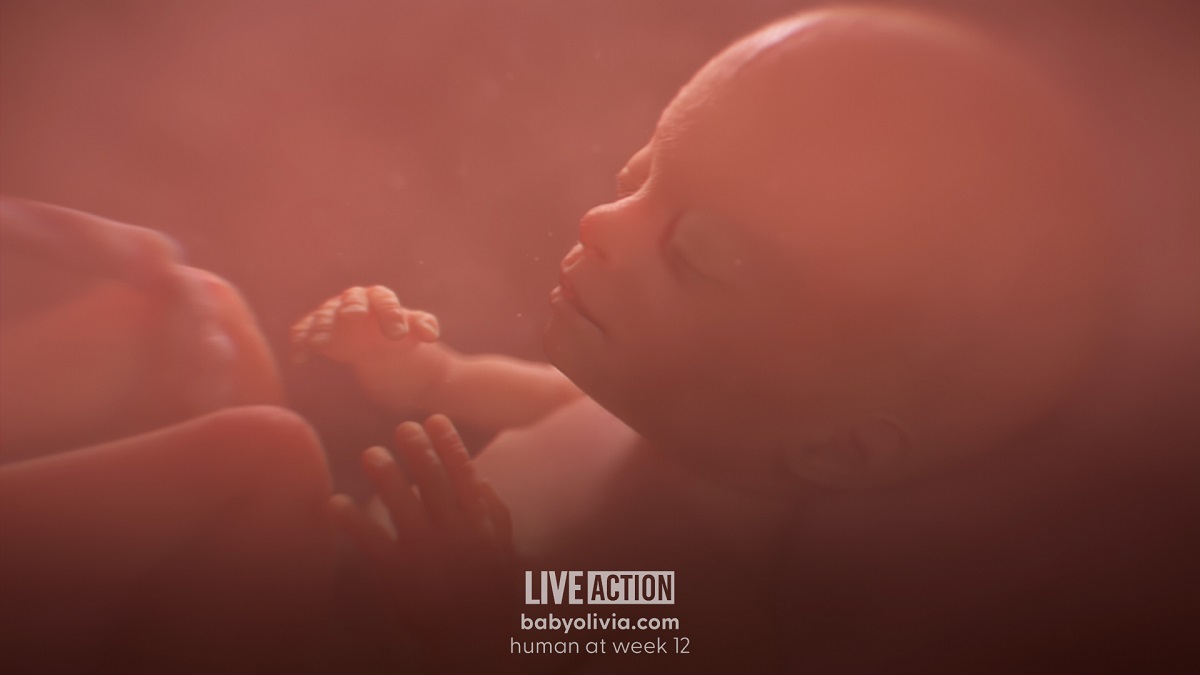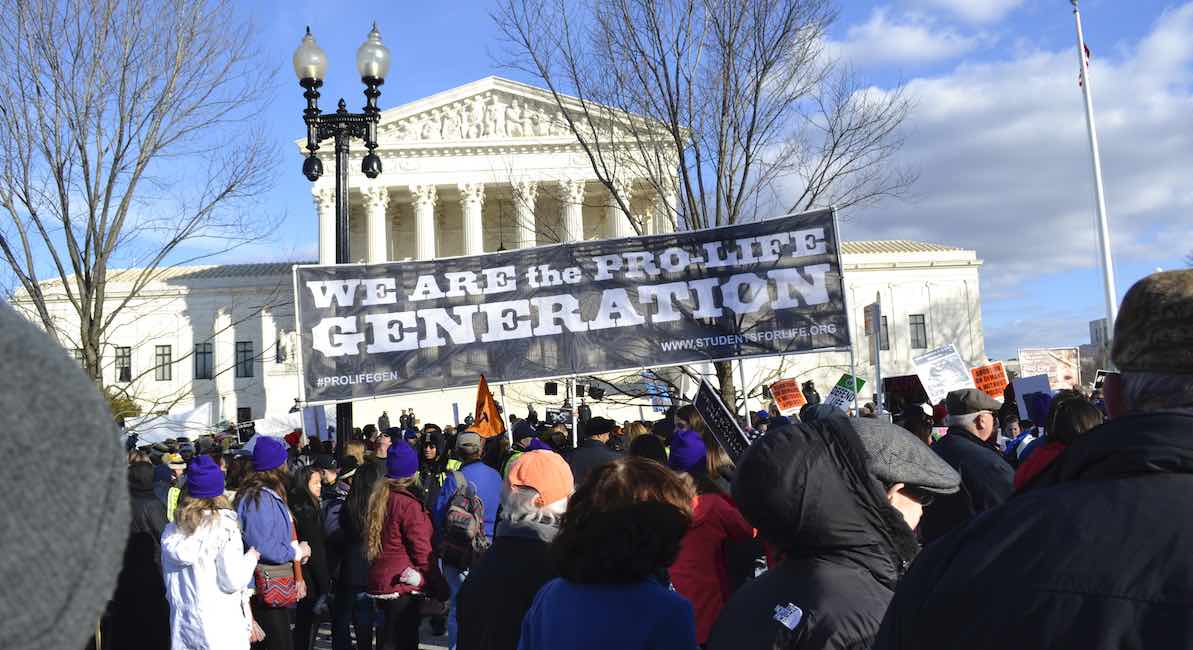In an amicus brief filed in the Dobbs v. Jackson Women’s Health Organization case to be heard by the U.S. Supreme Court, Democrats for Life of America (DFLA) described the Supreme Court’s fetal viability rule in abortion as “abstract and murky” claiming it has “caused courts to act as legislators.” The case centers around a Mississippi abortion law which prohibits abortion starting after 15 weeks gestation. The Court has agreed to hear arguments based upon the question, “Under the Constitution, may a State prohibit elective abortions before viability?”
According to DFLA, requiring courts to act as legislators “has so compounded the fetal viability standard of Roe and Casey in the courts today, with the resulting effect that any debate on ways to support mothers and children, as well as the individual themselves, has been literally taken away from the proper branch of government that the founding fathers have long envisioned where it should remain, namely Congress, and most importantly, state legislatures, directly elected by the people themselves.”

Previable child at 12 weeks her name is Olivia (Image credit: Live Action)
Interestingly, the late Supreme Court Justice Ruth Bader Ginsburg once suggested that “… Heavy-handed judicial intervention was difficult to justify and appears to have provoked, not resolved, conflict.” She later noted that Roe v. Wade was decided by “[n]ine unelected judges,” adding that the decision “[s]hould be decided by the people’s elected representatives. By the members of the state legislature.” (emphases added)
Court’s viability standard is arbitrary
The overwhelming scientific evidence surrounding the humanity of the developing child in the womb was overlooked when Roe was decided. But that evidence, even today, impacts public opinion on abortion. Ginsburg once acknowledged that, 10 years after Roe, “Justice [Sandra Day] O’Connor… described the trimester approach [in Roe] as ‘on a collision course with itself.’” Ginsburg added, “Advances in medical technology would continue to move forward the point at which regulation could be justified… and to move backward the point of viability….”
Briefs filed on behalf of the State of Mississippi in Dobbs also reveal the inconsistency of a “viability rule” that allows no state restrictions on whether preborn children can be killed through abortion prior to 24 weeks. This arbitrary cut-off, which first appeared in Roe v. Wade, was not determined based on science but instead was a “legislative” or political move by the Court, whose focus should be Constitutional concerns alone.
“The Court’s selection of viability as the time in pregnancy to assign value to the unborn child was an arbitrary policy choice,” the Catholic Medical Association (CMA) argued in its brief.
“Indeed, it was not until well after oral argument and circulation of the second draft opinion, that viability appears to have been discussed as a possible dividing-line within the framework that the Court was crafting to regulate abortion… [a]lthough viability was ultimately settled upon by the Court, Justice Blackmun described both the ‘end of the first trimester’ and ‘viability’ as being ‘equally arbitrary.’”
“The internal papers of the Court also suggest that the choice of viability was based primarily on pragmatic policy concerns and personal preferences with respect to allowing more time to obtain an abortion. It was not based on any evidence presented to the Court or on any constitutional or statutory text,” CMA et al added.
READ: Three reasons why the ‘viability’ rule in abortion law is unsound
Viability is not based on weeks but many other factors
Today, a child’s ability to survive outside the womb is determined by multiple factors, as several briefs in the Dobbs case pointed out. According to CMA et al, “[t]he location of the anticipated delivery and the provision of prenatal and postnatal care significantly impact survival rates for newborns.”
“Injecting further subjectivity into the viability calculus is the fact that a physician’s personal philosophy and attitude regarding the provision of life-sustaining medical interventions impacts the actual survival rate of an infant. Study after study throughout the world has shown that offering immediate life-sustaining treatment to preemies is the largest modifiable factor affecting infant survival,” wrote Life Legal Defense Foundation in its brief in the case. “The decision for or against medical care for premature babies is also shaped by attitudes toward disability.”
“With respect to postnatal care, the most important factors are providing immediate resuscitation to the newborn at delivery and the provision of intensive care thereafter,” CMA et al argued in their brief, asking, “Does a 20 percent probability of survival constitute a ‘reasonable likelihood’ of survival? Or must it be more than a 50 percent probability to qualify? And what is ‘sustained survival’? Does ten days qualify? Does discharge from the NICU qualify? Or, does it mean some other undefined time beyond that?”
The viability rule is unworkable
Under Roe and later Casey, viability was defined as a preborn baby’s ability to survive outside the womb. Live Action News previously documented that in 1973, this was anywhere between 20 and 28 weeks.
As Cleveland Lawyers for Life pointed out in their brief, “The best that the Court could do was to admit that its viability standard was ‘an imprecision within tolerable limits.’ Obviously, chances of surviving birth increase with the length of the pregnancy, but determining whether a particular infant within a particular pregnancy will survive birth is problematic.”
CMA et al pointed out, “This intentionality and control that is present in the abortion context, but lacking in other circumstances, distorts the meaning of viability and its usefulness as a ‘medical judgment’ in the two different situations.”
Reason for Life (RFL), in its brief on Dobbs, called the viability rule a “nebulous, subjective, unworkable standard” and warned, “Because the viability standard is amorphous, some unborn children who are in fact ready to live outside the womb will still suffer death by abortion.”
RFL said Casey’s revised viability standard allows “doctors to abort children who are already sufficiently developed to live outside the womb,” adding, “It is arbitrary to conclude that, for purposes of constitutional analysis, something ‘magical’ occurs once a child may be able to live outside his or her mother’s womb.”
Mississippi AG Lynn Fitch pointed out in her brief that “[s]cientific advances show that an unborn child has taken on the human form and features months before viability.”
She pointed out the vulnerability of all infants, born and preborn, writing, “Indeed, well after birth any child will be highly dependent on others for survival. It makes no sense to say that a State has a compelling interest in an unborn girl’s life when she can survive somewhat independently but not when she needs a little more help.”
The Alabama Center for Law and Liberty seemed to use the same reasoning, pointing out in its brief, “[I]f a person’s right to life is dependent on his ability to survive without the help of others, then most people would not have a right to life.”
“Like” Live Action News on Facebook for more pro-life news and commentary!







